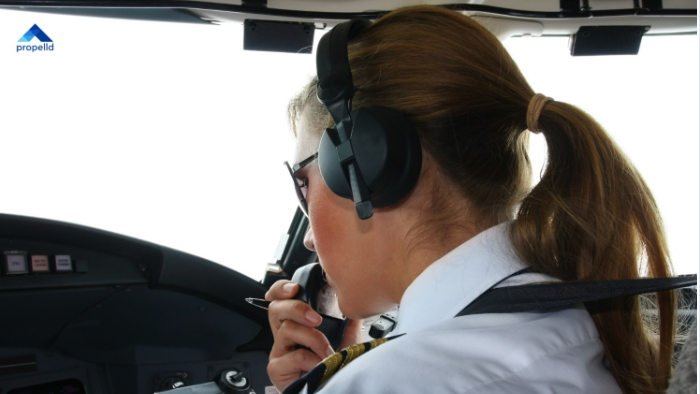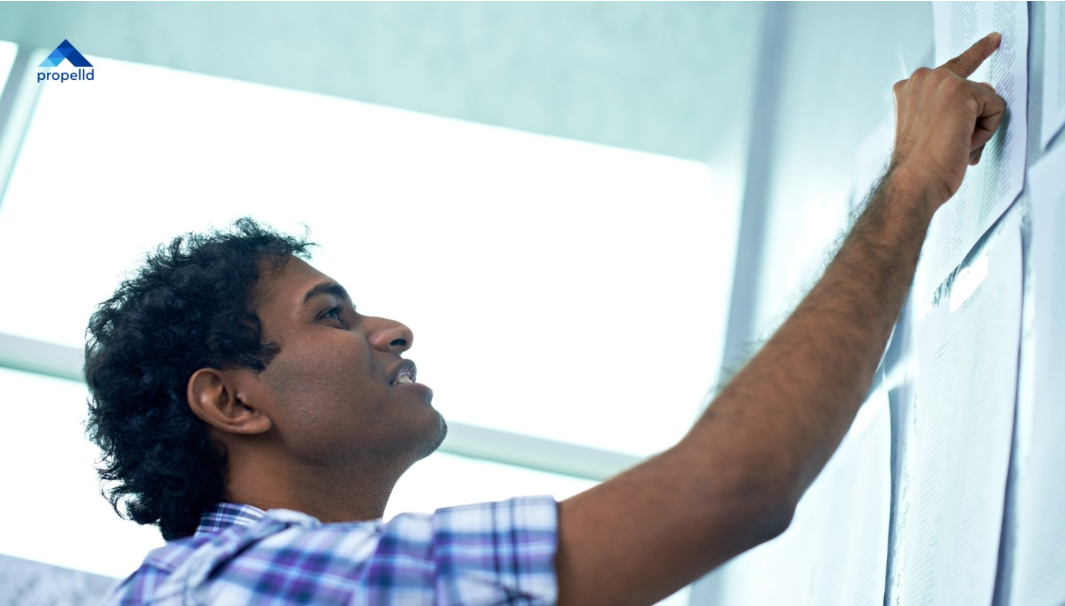Dreaming of flying commercial aircraft for a living? Commercial Pilot Training in India is the first step toward that goal. It involves structured ground schooling, practical flight hours, and passing DGCA exams to earn a Commercial Pilot License (CPL). The process can take anywhere between 8 to 24 months, depending on your training path.
In this blog, you'll find all the details, from eligibility and admission to course fees, top institutes, and salary expectations. It’s a helpful starting point if you're planning to pursue flying professionally.
Commercial Pilot Training: Course Overview
To become a commercial pilot in India, you must complete structured flight and ground training under DGCA guidelines. The training includes theory classes, simulator sessions, and a minimum of 200 flying hours.
Here’s a quick overview of what commercial pilot training in India typically includes:
Get 50 Lacs No Collateral Education Loan
Types Of Pilot Licenses In India
There are several licenses you can pursue depending on your aviation goals. DGCA regulates these licenses, and each has a specific age, training, and flying hour requirement.
Below are the most common types of pilot licenses in India:
Most students begin their journey with an SPL, progress to a PPL, and then pursue Commercial Pilot training to get a CPL. Some may go directly for commercial pilot license training if they meet the eligibility requirements from the start.
Need help covering your pilot training costs? Learn about the options in this detailed guide on Education Loan for Pilot Training.
Commercial Pilot Training in India: Eligibility Criteria
To qualify for Commercial Pilot Training in India eligibility criteria, make sure you meet the DGCA basic requirements. These ensure that every aspiring pilot is fit to fly, both physically and mentally.
Educational Qualification
You must have completed 10+2 with Physics and Mathematics from a recognised board. If you're from a commerce or arts background, you can still qualify by clearing these subjects separately through NIOS.
Age Requirement
The minimum age to start with a Student Pilot License is 16 years, while for a CPL, you need to be at least 18. Many training academies allow you to enrol as early as 17 if you're preparing for your PPL alongside ground school.
Medical Fitness
A Class II medical certificate is needed to begin your training, but you’ll need to upgrade to a Class I medical before applying for your CPL. These tests cover eyesight, hearing, cardiovascular health, and lung function.
Nationality
You must be an Indian citizen or an OCI cardholder to enrol in DGCA-approved flying schools. Some academies may accept foreign nationals, but only with additional regulatory requirements.
Once eligible, you can apply to DGCA-approved flying schools to begin your training.
Commercial Pilot Training: Admission Process
To start Commercial Pilot Training, you’ll need to meet basic eligibility requirements, clear a few exams, and complete flight hours. The full training usually takes 1-2 years, while a CPL alone can be finished in about 8-10 months.
How To Get Admission For A Commercial Pilot?
Step 1: Meet the Eligibility Requirements
You can begin commercial pilot training after completing Class 12 with Physics and Mathematics, and passing a DGCA-approved Class II medical test.
Step 2: Choose a Flying School
Select a DGCA-approved flying academy that fits your budget, location, and training needs. Look for batch sizes, aircraft types, and past placement records.
Step 3: Clear Medical Examinations
Before beginning flight training, get a Class II medical certificate. You'll need to upgrade to Class I before applying for your CPL. Tests include ECG, eye check-ups, lung function, and hearing.
Step 4: Enrol in a Training Program
Apply for your Student Pilot License (SPL) and begin ground school. You'll be introduced to aviation theory, aircraft systems, air navigation, meteorology, and regulations.
Step 5: Accumulate Flight Hours
Work under an instructor to log the required 200 hours of flying for CPL. This includes single-engine and multi-engine aircraft experience, solo flights, and simulator sessions.
Step 6: Complete DGCA Exams
Pass all five written exams, a flight check, and a short oral. These test your knowledge, flying skills, and radio communication.
Step 7: Apply for the Pilot License
Once you meet all the flying and academic conditions, submit your documents to DGCA and receive your CPL. You can now apply for co-pilot positions or airline openings.
Step 8: Optional Endorsements
If you want to fly specific aircraft, you'll need to undergo type rating training. This is often offered by flying schools or separately through aviation training partners.
What Are The Exams For Commercial Pilot Training?
Most DGCA-approved flying schools in India accept direct applications, but some conduct entrance exams to assess student aptitude, English skills, and aviation awareness. If you’re aiming to become a military or air force pilot, you’ll need to clear exams like AFCAT, CDS, or NDA.
For civil aviation, DGCA conducts three stages of testing for CPL:
- Written Exams
There are 5 subjects, including Air Navigation, Meteorology, Air Regulation, Aircraft Technical Knowledge, and RTR (A). - Flight Test
A practical exam to assess your flying accuracy and safety under supervision. - Oral Examination
Part of the RTR(A) process, testing your in-flight communication and decision-making.
Dream College? We’ll Fund It
Commercial Pilot Training: Syllabus
The Commercial Pilot Training syllabus in India is designed by DGCA and focuses on both theory and flying practice. You'll study subjects like Air Regulations, Aviation Meteorology, Air Navigation, Technical General, Technical Specific, and Radio Telephony.
Is Becoming A Pilot In India Expensive?
Many students dream of becoming pilots but aren't sure how to begin or manage the cost. Platforms like Reddit often bring out honest, unfiltered questions that reflect what thousands of aspirants are thinking.
Let’s look at a real case that highlights this confusion and curiosity.
Reddit User: r/Indian_Academia shared: “How to become a pilot? How much will it cost?”
Insight: This is one of the most common doubts students have when they consider Commercial Pilot Training. The user is interested but unsure where to start or how financially demanding the journey will be.
What do we infer from the above case?
Many students want to pursue commercial pilot training after 12th but feel stuck at the starting line. The confusion often comes from not knowing the exact steps or financial planning needed. The training includes ground school, flight hours, and DGCA exams, totalling around ₹45-₹75 lakh.
Tip: If upfront costs are holding you back, student-friendly education loan providers like Propelld offer 100% financing with no collateral, quick approval, and repayment options that align with your career progress. It’s a solid way to move ahead without financial stress.
Commercial Pilot Training: Fees in India
The total commercial pilot training fees in India depend on the license, school, and aircraft type used during flying hours. On average, students spend between ₹40-55 lakhs to complete their CPL.
Best Commercial Pilot Training Institutes In India
India has many DGCA-approved flight schools offering quality Commercial Pilot Training. The training quality, fleet size, and placement support vary, so it’s important to compare before choosing.
Below are some of the best commercial pilot training institutes in India:
Commercial Pilot Training: Jobs & Salary
Once you complete your Commercial Pilot Training, you can explore multiple job roles in civil and defence aviation. Salaries depend on your role, experience, and aircraft type.
Becoming a pilot is a serious investment of time, effort, and money, but it's also one of the most rewarding careers out there. If you're ready to pursue Commercial Pilot Training, now's a great time to start. With the right guidance, training, and support, you can turn your dream of flying into a lifelong profession.
Ready to start, but worried about the cost? Propelld makes funding your pilot training simple, fast, and hassle-free. Whether you're training in India or abroad, Propelld offers 100% financing, no collateral, market-based approval, and faster disbursals than banks.
So why wait? Apply now and let Propelld help you reach for the skies without financial turbulence.














.svg)